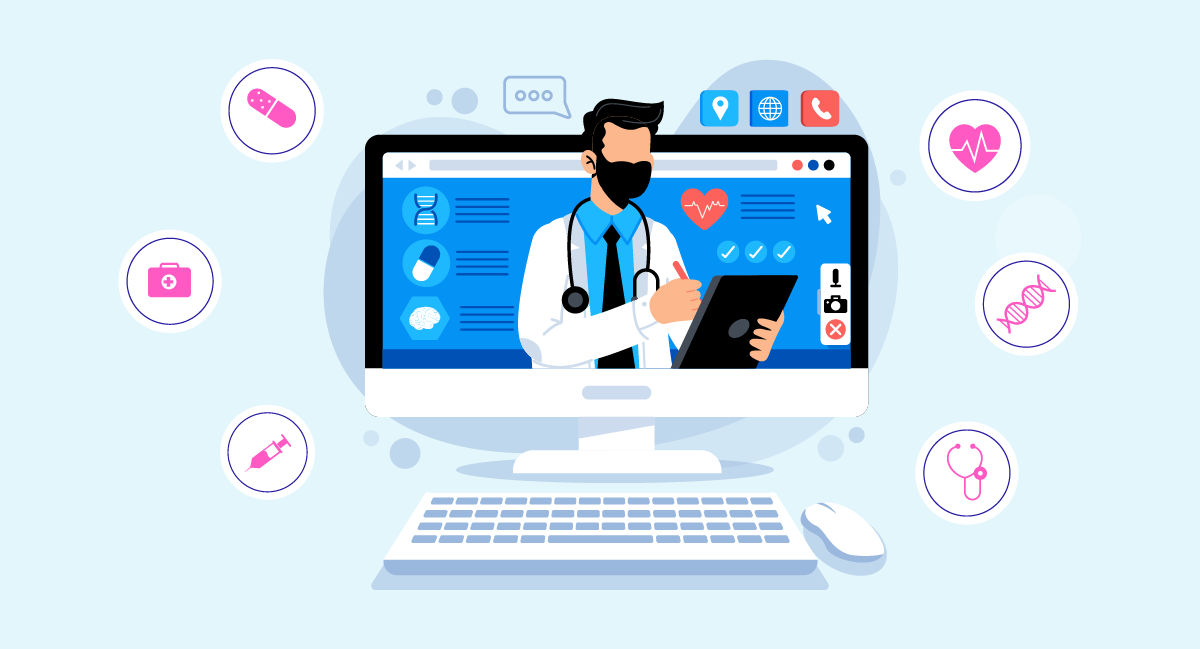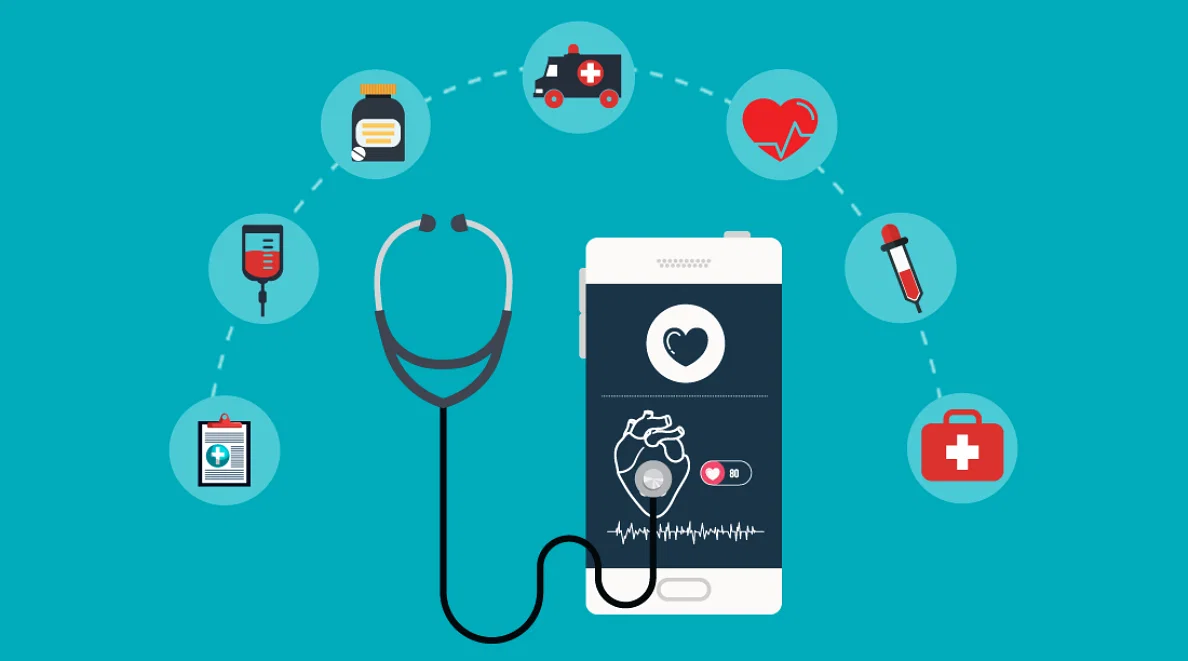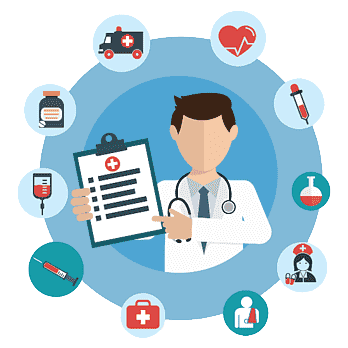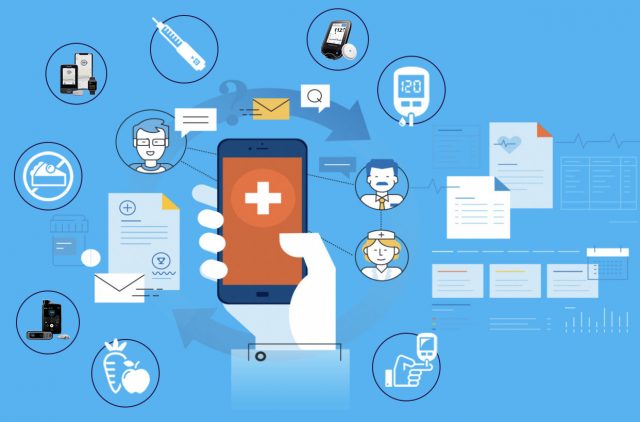HOSPITAL SOFTWARE & MOBILE APPLICATIONS
A hospital information system (HIS)
is a branch of health informatics that primarily addresses the administrative requirements of hospitals. In many implementations, an HIS is a thorough, integrated information system made to handle all aspects of a hospital’s operation, including medical, administrative, financial, and legal concerns and the processing of services in accordance with those concerns. The central government level, territory level, and patient carrying level are the three main levels of the hospital information system architecture. Client-server architectures typically support all types of hospital information systems (HIS) for processing and networking. The majority of HIS jobs at the moment are resident-type positions. Wheeled PC stands were the first step towards mobile computing. Applications for smartphones and tablet computers are now common.
The successful deployment of enterprise HIS with Internet architectures in public healthcare territories has led to widespread adoption by additional entities. Using a centralised electronic information system, the Hospital Information System (HIS), a province-wide initiative, aims to improve access to patient information. The objective of HIS is to improve the accessibility of patient information for physicians and other healthcare professionals. Over time, these service changes will raise the standard of patient care and increase patient safety.

The patient’s carrying system keeps track of patient data, laboratory test results, and doctor data. Information about the patient, test results, and previous prescriptions are readily available to doctors. Related systems can offer early warning systems and patient schedule organisation.
The primary focus of HIS is data warehousing, leading to a more static model of information management. HIS is frequently made up of one or more software components with specialty-specific extensions and a wide range of medical specialty sub-systems from a multi-vendor market. Laboratory Information System (LIS), Policy and Procedure Management System, Radiology Information System (RIS), or Picture Archiving and Communication System (PACS) are a few examples of specialised implementations.
The architecture is based on a distributed approach and on the use of industry- and market-compliant standard software products (like UNIX operating systems, MS-Windows, local area networks based on Ethernet and TCP/IP protocols, relational database management systems based on SQL or Oracle databases, C programming languages, etc.).
At the bedside, portable gadgets like smartphones and tablets are allowed.
A common source of information about a patient’s medical history is provided by hospital information systems. Data must be kept in a secure location, and the system must restrict access to it under certain conditions. These systems help healthcare providers better coordinate patient care by making a patient’s health information and visit history available when and where it is needed. Laboratory test results for patients also include visual information, such as X-rays, that may be accessible to experts. Healthcare providers can communicate both internally and externally thanks to HIS.
Organisations (in this case, a hospital), official documents, financial situation reports, personal data, utility costs, and stock levels may all be controlled by the HIS. Patients’ information, medical histories, prescriptions, surgeries, and lab test results are all stored securely by the HIS.
Organisations, handwriting errors, overstock issues, scheduling conflicts, and mistakes in official documentation like tax preparation may all be protected by the HIS.
THE ADVANTAGES OF MOBILE HEALTH APPS TODAY & TOMORROW
The Fitbit could get people moving more and thereby preventing disease while the future holds mobile devices capable of measuring cholesterol, heart rate, and possibly even the presence of an infection.

By enhancing communication and care coordination among specialists, doctors, nurses, and others, the mobile health industry, along with remote monitoring and telehealth systems, has a significant impact on lowering hospitalisations and ER visits across the healthcare spectrum. The use of mobile health apps and improved communication has been shown to reduce hospital readmission rates by 92 percent while decreasing emergency room visits by 87 percent.
More people are now focused on improving their health and wellness thanks to the use of mobile communication tools, which has increased patient engagement. Examples of this include continuing exercise routines, adhering to medication schedules, and keeping follow-up appointments, as well as following a healthy, doctor-recommended diet.
Benefits of Health in emergency care
Many hydrocephalus patients ended up in the emergency room without knowing what kind of shunt they had installed or any of its settings, which is the issue that the Health apps aim to solve. This can be problematic if a patient is on the road and visits a healthcare facility without having this information on hand.The issue is solved, and patients can feel secure knowing their health is protected even when travelling outside of town thanks to mobile health apps that store this crucial information.Patients generally had positive things to say about these mobile tools, and some even expressed gratitude for how the app had saved their lives when they had to seek emergency care.
In addition, patients occasionally found themselves in need of an MRI, showed up for their appointment, and had no idea if their shunt was compatible with an MRI machine. However, the imaging specialists were able to use the Health app to determine whether the patient could go through the MRI screening without any issues or whether to postpone this particular test.


Health apps for diagnosing disease
Given that they may even be able to diagnose diseases and lower the risk of developing dangerous medical conditions like heart disease or diabetes, mobile health apps and devices are having a significant impact on the healthcare sector. Future mobile devices will be able to measure cholesterol, heart rate, and possibly even the presence of an infection. The Fitbit could encourage people to move more, thereby preventing disease.
He replied, “We think in the short term, what we’re seeing is very rapid growth in devices like the Fitbit and many other comparable devices that count our steps. People who track their health and activity are healthier, according to studies conducted decades ago. Although it may seem obvious in some ways, the correlation is actually valid. The simplest thing is how many steps you took; these are measures of your activity.
“In terms of the range of things that could be measured, the future will be much more significant. Not only steps, but cholesterol, the presence of an infection, your heart rate, and many other tests could also serve as indicators for what is happening inside the body.